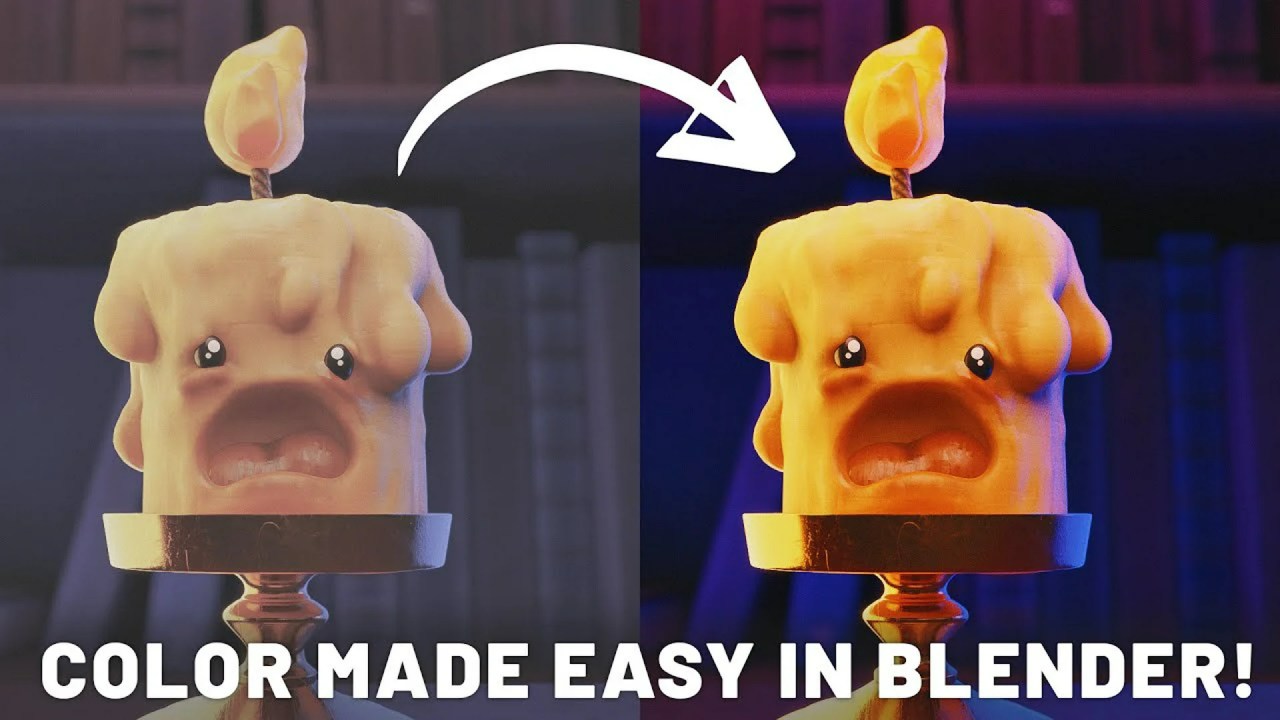In the world of 3D modeling and game development, optimizing assets is crucial. One technique that stands out for its efficiency and creative potential is the use of texture atlases. These ingenious tools allow artists to texture entire characters, props, and even full scenes using just one tiny image file, dramatically reducing resource load and simplifying workflows.
Popular Blender creator, Vertex Arcade, demonstrates the power of this technique in a detailed tutorial. He shows how to move beyond numerous heavy 4K textures, instead embracing a single, small image file. This approach is not only practical but also opens up new avenues for stylized art, particularly within low-poly aesthetics.
What is a Texture Atlas?
At its core, a texture atlas is a single image file composed of multiple smaller textures or, in many cases, a color palette. Instead of having separate texture files for different parts of a model or scene, all necessary colors and simple patterns are contained within this one compact image. This significantly simplifies UV handling, as complex unwrapping often becomes unnecessary. Instead, UVs are simply shifted around the atlas to pick the desired colors or patterns.
These atlases are incredibly scalable. For instance, an 8×8 pixel image can provide 64 distinct colors, while a 16×16 image offers 256. This flexibility means you can start small and expand your palette as your project’s needs evolve.
Getting Started: Sourcing and Creating Atlases
You have a couple of options for acquiring texture atlases. You can download pre-made atlases and color palettes from dedicated websites, or you can create your own in image editors such as Photoshop or even directly within Blender by filling pixels with different colors. The artist recommends starting with a small resolution and only increasing it if more colors are required, maintaining efficiency from the get-go.
Applying Atlases in Blender
Integrating a texture atlas into your Blender workflow is straightforward but requires a crucial setting. Once loaded into the shader editor, you must change the texture’s interpolation from the default “Linear” to “Closest.” This ensures crisp, pixel-perfect edges, which is vital for maintaining the integrity of pixel-based color selections.
Initially, your model’s UVs will likely be stretched across the entire atlas, resulting in a multicolored mess. To fix this, Vertex Arcade demonstrates selecting the entire model in the UV editor, switching to vertex mode, selecting all vertices, and scaling them down to a single point. This collapses all UVs, allowing you to move this single point around the atlas to pick a base color. For individual parts, you can select specific faces or use linked selection (L in face select mode) and move their respective UVs to different color spots on the atlas. For better visual feedback, he suggests plugging the texture atlas directly into a viewer node and reorganizing the viewport.
Adding Details and Complexity
Creating intricate details with a texture atlas is surprisingly fast and flexible. Techniques like insetting, using the knife tool, and loop cuts become powerful allies. For example, to create eyes with pupils and an outline, you can select the eye faces, inset them slightly, move the outer loop’s UVs to black, and the central pupil faces to white. If you have the Loop Tools add-on enabled, these central faces can even be transformed into perfect circles. Shadows or other shapes can be efficiently created by using the knife tool to cut new geometry and then moving the UVs of these new faces to a darker color on the atlas. This method allows for instant color changes by simply shifting UVs, or even experimenting with entire color schemes by sliding all UVs across the atlas simultaneously.
Exploring Gradient Palettes
Beyond solid color blocks, gradient palettes offer a rich range of shades for each color. These can be created by expanding a regular palette vertically, stretching it along the Y-axis, and adding a black or colored gradient with the blend mode set to multiply. When swapping to a gradient atlas in Blender, your character might appear darker. To adjust this, you simply drag the UVs upwards on the gradient.
For gradients to work effectively, UVs need to be spread vertically across the texture rather than collapsed to a single point. This can be achieved by selecting desired model parts, using “Project from View” (U), and then scaling the UVs to zero on the X-axis (SX0) to make them vertical. Adjusting the Y-axis scaling then controls the gradient’s extent. When using gradient atlases, remember to change the texture interpolation back to “Linear” to ensure smooth color blending. Rotating UVs can also subtly flip or reorient the gradient, offering even more control. This combination of detailed geometry work and precise UV placement allows for incredibly detailed texturing of any asset, all while maintaining the efficiency of a single, lightweight texture.
Conclusion
Texture atlases are a game-changer for anyone looking to optimize their 3D assets in Blender, especially for low-poly or stylized projects. Vertex Arcade’s tutorial provides a clear, actionable guide to harnessing this powerful technique, proving that you don’t need massive texture files to achieve stunning and detailed results. By mastering UV manipulation and understanding interpolation settings, you can unlock a new level of efficiency and creative freedom in your 3D endeavors.
Source:
This Blender Scene uses ONLY ONE TEXTURE (Texture Atlas/Colour Palette Tutorial) – Vertex Arcade



